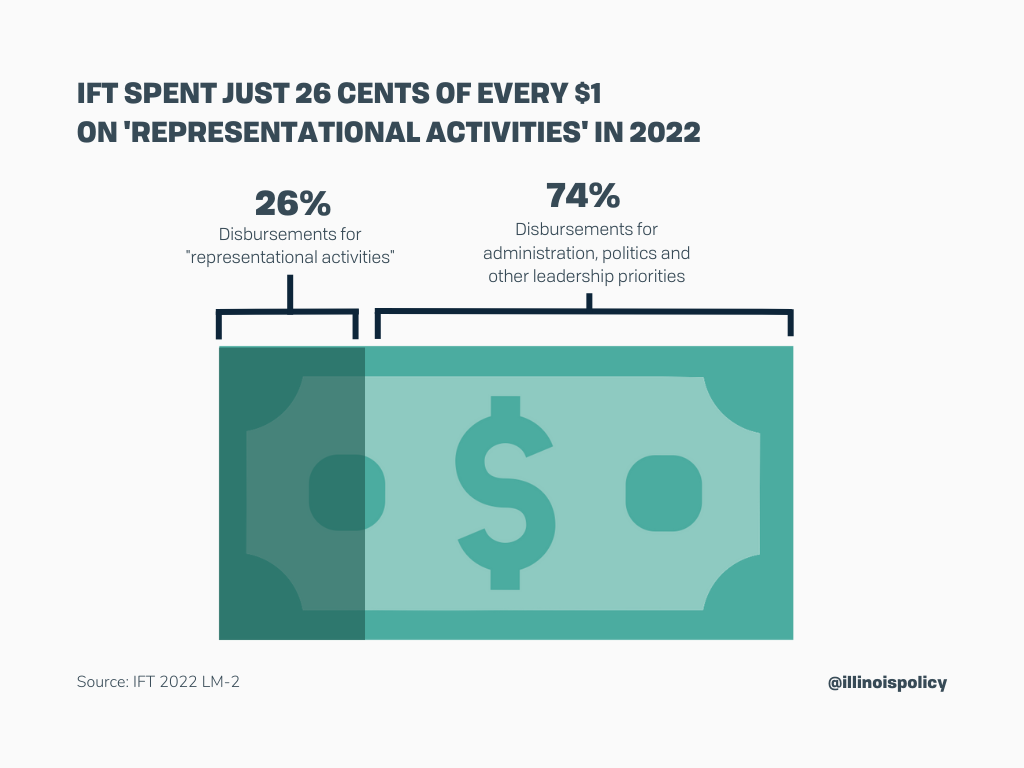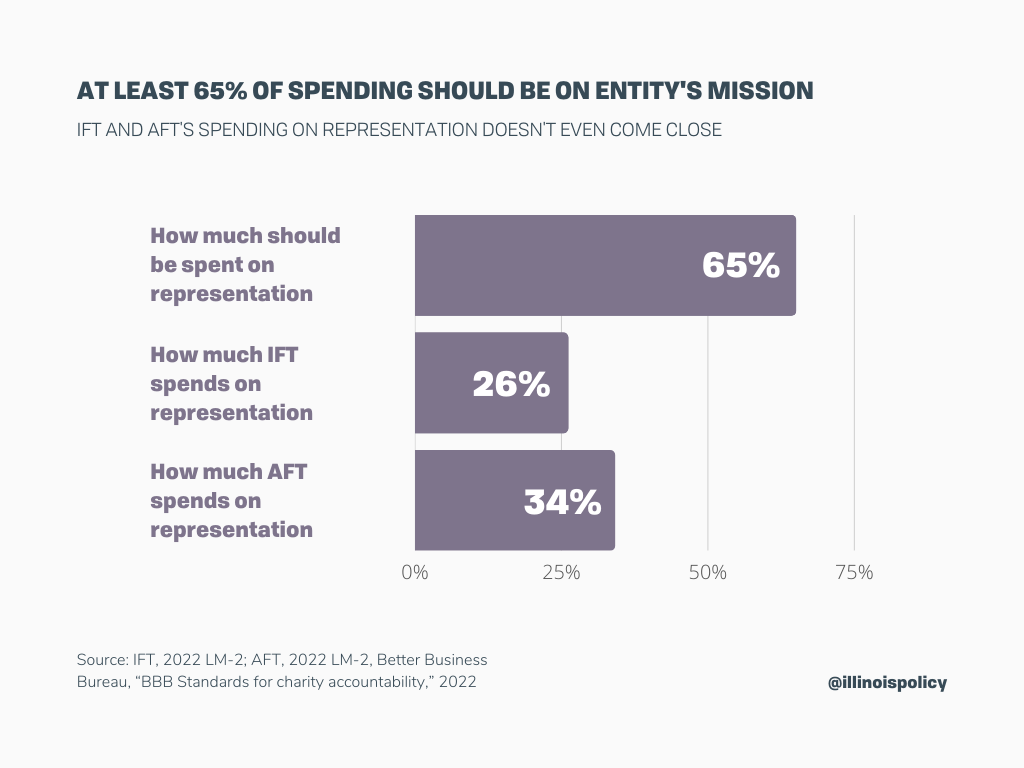Illinois Federation of Teachers spends little on representing teachers, members flee
Just 26% of IFT’s spending in 2022 was on representing teachers. IFT’s questionable spending could be why nearly 16,500 Illinois public school employees have chosen to distance themselves from the union.
The Illinois Federation of Teachers doesn’t spend much on representing teachers, despite representation being the core purpose of a union.
In 2022, just 26% of the union’s spending was on “representational activities,” according to a report IFT filed with the U.S. Department of Labor. The rest was on politics, administration and other union leadership priorities.
Most teachers’ dues don’t stay local but flow up the chain to the state and national affiliates. The American Federation of Teachers, IFT’s national affiliate, spent millions on politics in 2022.
That could be why teachers are leaving IFT in droves. Since 2017, more than 16,400 Illinois teachers and other public school employees have stopped paying dues or fees to the union, according to the union’s federal reports.
Illinois teachers concerned about how IFT and AFT spend their hard-earned money have options. They can stop paying dues by opting out of union membership.
Nonmembers keep all of the raises and other benefits their employers provide. Other professional organizations can provide liability insurance and job protection coverage, often at a fraction of what union membership costs.
Just 26% of IFT’s spending was on representing teachers in 2022
IFT spent a total of $49,719,191 in 2022, according to the union’s 2022 LM-2, which is the reporting document the union filed with the U.S. Department of Labor.
Yet just $12,972,199 was on “representational activities,” which the Department explains are activities “associated with preparation for, and participation in, the negotiation of collective bargaining agreements and the administration and enforcement of the agreements.”
That means just 26% of IFT’s spending was on representing teachers, the core purpose of the union. The rest was spent on politics, administration and other union leadership priorities.

AFT didn’t fare much better, with just 34% of its spending on representing teachers, according to its LM-2.
To place this in perspective, the Wise Giving Alliance, a project of the Better Business Bureau, maintains a nonprofit should spend at least 65% of its total expenses on program activities.

While the Wise Giving Alliance tracks spending by charities, it stands to reason AFT and IFT’s spending of just 34% and 26%, respectively, on representation should be a cause for concern among members.
AFT spent millions of dollars on politics in 2022
Illinois teachers can spend hundreds a year on union dues, but that money doesn’t stay with the local bargaining unit. Most of it flows up to IFT and AFT. There’s little to no accountability at that point on how the money is spent.
AFT reported spending $35,762,365 on “political activities and lobbying” in 2022, which included the following:
- $2 million to For Our Future, which claims to “build progressive power”
- $2 million to Senate Majority PAC, which is committed to getting Democratic politicians elected to the U.S. Senate
- $1 million to House Majority PAC, which is committed to getting Democratic politicians elected to the U.S. House of Representatives
- $750,000 to Priorities USA Action, which describes itself as a “progressive research hub”
- $300,000 to America Votes, the “coordination hub of the progressive community”
- $200,000 to the Congressional Progressive Caucus Center, a self-proclaimed progressive organization
- $200,000 to the Sixteen Thirty Fund, which bills itself as “empowering progressive changemakers.”
That doesn’t include the additional $7 million AFT spent on “contributions, gifts and grants.” That spending can also be political in nature. For example, AFT’s 2022 contributions included recipient American Constitution Society, which advocates for the confirmation of “liberal judges.”
Regardless of whether members support the political leanings AFT supports, the millions spent by the union on politics is cause for concern.
Teacher union membership is in decline
AFT and IFT’s failure to prioritize members could be why so many teachers are leaving the union.
In Illinois, at least 16,410 public school employees have stopped paying dues or fees to IFT since 2017, according to the union’s 2017 and 2022 LM-2s.
Those numbers drive home the fact Illinois educators don’t have to stay in the union. They have choices:
- Teachers can get liability insurance and legal protection elsewhere. Educators can join other associations, such as the Association of American Educators. AAE, which has 29,000 members across the country, provides liability insurance and legal protection to public school employees – typically at a fraction of the cost of union membership.
- Teachers can opt out of union membership and keep all employer-provided benefits. By opting out of union membership, a teacher stops paying dues to the union yet retains all benefits provided in the collective bargaining agreement with the school district.
Opting out doesn’t mean educators don’t support their local bargaining unit. In fact, educators are free to send voluntary donations to their local bargaining units without being members – thereby helping to ensure their support stays local.
For more information, visit LeaveIFT.com.
